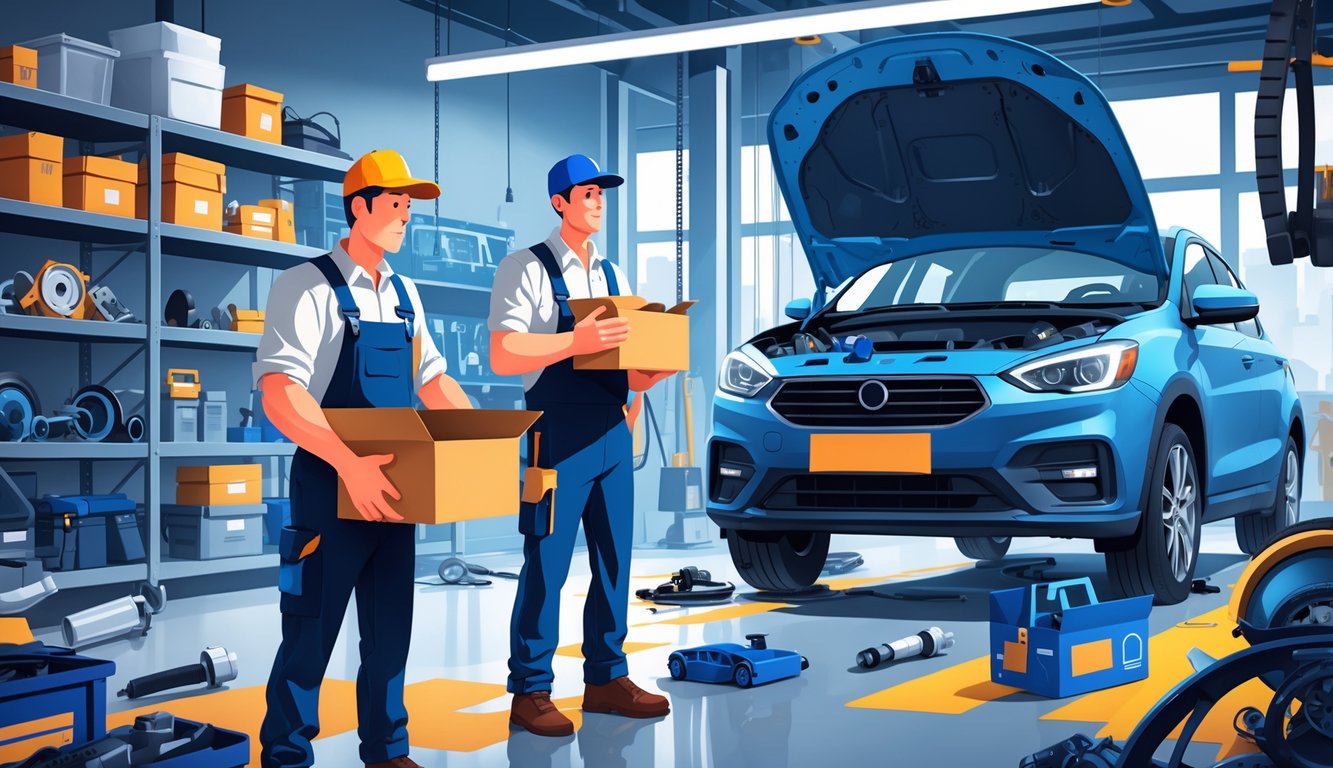
The Role of Technology in Managing Delays
It’s wild—every shop manager I talk to thinks their “stockroom guy” remembers every shortage since last August. Meanwhile, my own plumbing leaks. Real-time data? Always stutters or disappears right when you need it. Mazda alternators pile up, Ford orders go sideways, techs stare at empty bins, and the CRM just pings “pending completion” like that helps. None of it matches what last month’s calendar promised.
Inventory Tracking Systems
It’s never just about barcodes. Everyone’s selling some scanner or “cloud dashboard,” but ask the front desk—most are wrestling buggy QuickBooks integrations and praying the “Mad Cap Inventory App” doesn’t crash. I’ve watched parts managers sprint between aisles, scribbling notes in paper binders, even though we supposedly upgraded to cloud software. Epicor, Mitchell 1—sure, they promise fewer headaches, but Gartner says 46% of auto shops still get burned by missing stock thanks to mismatched records (Gartner, 2024).
PartsTech plugin is neat—you can see supplier status live. But if nobody’s trained? Chaos. Alerts get ignored, Ford backorders pile up, and someone blames the intern who just learned how to run a cycle count. RFID tags? Cool, until they fall off and end up in the oil pan. Honestly, nothing beats a daily manual shelf check. It’s annoying, but at least you can’t code away an empty bin.
Forecasting and Analytics
So, forecasting high-demand parts based on last month’s numbers? Honestly, it’s like gambling with Monopoly money—some exec somewhere bought into “predictive analytics” dashboards, and yet I’m still twiddling my thumbs for three days waiting on a bag of Honda O-rings. Machine learning for parts? Yeah, right. Some Bosch regional manager just told me, “The models guess off last year’s blizzards, and nobody even tracks local construction.” That about sums it up. AI forecast says brake pad demand will triple, but FedEx? They’re still stuck in traffic.
There’s this shop owner in Philly—sent me his raw NAPA TRACS exports. All these rainbow spikes and valleys. “Looks impressive,” he goes, “until a supplier holiday nukes everything.” Aftermarket News did a Q2 2025 survey, and like 37% of people just flat-out don’t trust their forecasting tools to actually reduce late jobs. I stare at the data, try to compare sales to lead times, and then something random shifts before I even finish my coffee. If anyone’s got analytics that can juggle random OEM delays, out-of-stock flags from four different distributors, and all those weird holiday black holes, please, seriously, email me—I’ll Venmo you for it.
Long-Term Solutions for Repair Shops
Anyway, this morning I tried to find a basic alternator (Model 7722, not even rare), and guess what—dead ends everywhere. Why is procurement still a mess? Beats me. There are fixes, though. People keep telling me to split orders across five sources, or pool with other shops—OEM reps, field techs, everyone. “It’s the only thing that stopped total chaos for us last quarter,” someone said. Maybe they’re right.
Diversifying Parts Sources
Aggregators promise overnight, but let’s be honest—if you’re stuck with just one, or (God help you) those two usuals, you’re toast as soon as Ford emission sensors or Denso O2 sensors get jammed up at customs. I keep a Google Sheet (shared with at least two techs) tracking backup suppliers for stuff that always fails. Sometimes it’s eBay Motors, sometimes it’s that regional guy whose name I can’t pronounce.
Auto-alerts for SKUs that tank every autumn are a must. (No one warns you, but those pricey German SUV air filters? Gone exactly three weeks before every holiday. Ask your vendor why and suddenly you’re “that guy.”) Trade mags brag about “60% fewer delays” if you sync to multiple catalogs—sure, maybe I saw 20%, but hey, I’ll take it.
One vendor just shrugged and said, “There’s always another source, but it’s never pretty.” Checks out. PartsPal, LKQ, local salvage yards—they’re not glamorous, but sometimes they’re the only thing between you and making up a story for the customer about “unexpected issues.”
Collaborative Purchasing
Dealership down the street? Usually we avoid eye contact at supplier breakfasts, but two winters ago, every alternator was backordered, so I joined this ragtag shop coalition. Invoice dropped 3% compared to my solo order, no strings, just more WhatsApp notifications. If you can wrangle a buying co-op—even if it’s chaos—you’re already ahead of half the shops I know. Most just give up when their Mahle oil filters vanish.
Pooling inventory gets messy. Steve from Maple Tires swears by spreadsheet swaps. I tried group texts—utter disaster, but “who has three fuel pumps” at 7pm still works. Brokers aren’t thrilled when they catch us sharing freight, but the savings on big stuff? Not bad. Two shops both needed the same cats—why not split a bulk case? There’s something satisfying about beating the dealers at their own game.
Just don’t trust a purchasing pool if Cheryl’s still scribbling on carbon copy pads. And if anyone claims there’s never been a fight over brake pads, they’re either lying or brand new.
